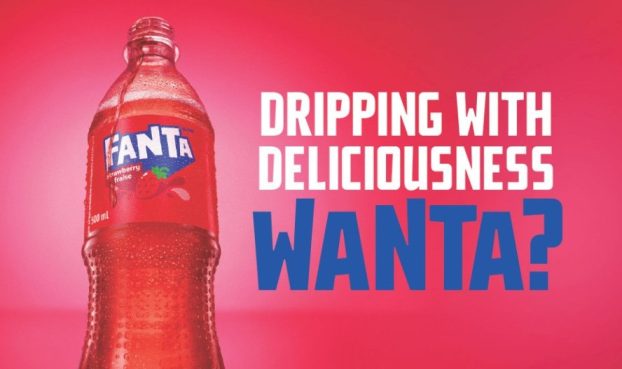Leo Burnett Company
Agency Billings $160MM
Top 10 clients (in alphabetical order): Bell Canada, Canadian Home Proudcts, Kellogg Canada, Kraft General Foods, Neilson Cadbury, Nintendo, Pillsbury Canada, Procter & Gamble, Visa and Wrigley Canada.
In a confidential poll of about 200 media sellers, Leo Burnett Company was voted Best Media Operation.
We asked Terry Sheehy, senior vice-president, media services at Leo Burnett, to comment on the importance of the media function.
Q. How far along the road are we to acknowledging the full importance of the media function?
A. From my vantage point of 22 years, I can say we are certainly en route.
Relative to my early ’70s experience, there are now more of us in every organization, and we are, as a whole, better educated, better compensated, more respected, more influential, and perhaps most salient of all, more accountable to much higher expectations.
The cynic might say that speaks more of how little we were then to how much we have become.
I am not a cynic. I have witnessed real progress, but I also acknowledge we have a long way to go.
‘Importance remote’
As long as media continues to be viewed and treated by many as a uniquely specialized function that can be effectively practised in isolation, devoid of the need to truly understand brand and creative and the dynamics of a brand’s consumer behavior, then the destination of full importance is remote.
As long as many media people on both sides, buyers and sellers, content themselves with the notion that their responsibility is all about knowing their media business, and not a hell of a lot about knowing their client’s business, then the destination of full importance is remote.
As long as too many clients see no issue, or vent no frustration with either the former or the latter scenario, then the destination will remain remote.
As negative as all that sounds, my prognosis for media’s future is anything but.
No side mentioned is comfortable with, or resigned to, the status quo. All sides are likely catalysts for positive change. And, I see change happening as we speak.
At Burnett, media people are more involved in the advertising process today than I would have ever imagined as recently as two years ago.
We participate and contribute from the outset, beginning with our role in what we have coined as ‘kickstart meetings.’
The mindset is non-denominational with creatives, client services, account planners and our integrated communications specialists, talking and sharing ideas before strategy is set and creative is briefed.
The mandate is ‘solution-neutrality,’ and everyone has a valued point of view.
It’s a more radical notion, for the media role, than it should be. One day, it won’t be.
Convenient, safe, generic media thinking has become persona non grata.
Media recommendations are not bound by the need to be consistent with prior learning or puffed-up agency planning principles.
The only rule is that there are no rules. And, if the end result of the process is a product seemingly not too dissimilar from one born in isolation and of traditional parentage, that’s okay.
‘Process raises the bar’
We don’t apologize for that. The journey is as relevant as the destination. The process itself raises the bar on the media function.
There is lots of evidence that sellers are working at change – becoming less sales-myopic and much more marketing- and customer service-conscious.
We are seeing more investment in better research, more accountability on audience delivery, more receptiveness to innovation.
More ‘What can we do,’ less ‘That can’t be done.’ It all raises the bar on the media function.
My experience with clients is that their interest in their media product is growing exponentially.
Candidly, the driving factor is, more often than not, their suspicion that the product just isn’t that good. Or, at least, could be better.
They don’t want what they see as yesterday’s solutions for today’s problems. Many clients are relaxing the rules on quantitative rationale and opening the door on qualitative judgment. It raises the bar on the media function.
‘Conditions ideal’
In short, I think conditions are ideal for media people to realize more importance, more profile, more respect. The spotlight is on, all we need do is walk under it, and perform, of course.
Applause has to be earned.
Q. How will the face of advertising change once the function and influence of media people in agencies have been fully realized?
A. Insofar as the advertising agency is concerned, I see profound change in our future.
But, I should state upfront that the change is not intrinsically linked to, or by, media people having to realize more influence.
I don’t believe we are currently at the bottom of the food chain.
The successful agency of tomorrow will have to offer more than simply a great creative product and a great media machine.
We have to expand our product line to include great direct, promotion, database, sponsorship and event capabilities.
Media can have a big role to play in that.
I see lots of overlap and convergence between the so-called ‘traditional’ media and the so-called ‘new’ media.
If media people seize the day, embrace these forms, partner with their specialists, then I see a face of advertising where today’s media practitioner is tomorrow’s multidisciplinary communication specialist in a communications agency.
I think that both the labels of advertising agency and media service will be viewed as anachronistic in the not-too-distant future.
I don’t know if the multidisciplinary communication specialist will perch at the top of the food chain. Perhaps.
Q. The term ‘partnership’ is used a lot, but how much has the relationship between buyers and sellers evolved?
A. The short answer is, significantly, in this decade.
The ’80s history is largely adversarial and confrontational.
Media efficacy was mostly about what you pay, very little about what you buy.
I believed then, as I do now, that this was media operating at the absolute lowest common denominator.
If all we are about is cheap commodity buying, we frankly don’t deserve more influence and recognition.
It’s not a particularly challenging mandate.
Oscar Wilde described one of his characters this way, ‘He knows the price of everything…the value of nothing.’
That description may too well describe the history of the buyer-seller relationship.
Both sides.
Today, the bar is measurably higher.
Both sides are getting smarter about the value equation. Neither of us has the definitive answer.
Value is much less quantifiable than price.
Both sides are better served by searching in partnership.
This is a terrible analogy, but here goes: ‘We are in a race. Better that we make it a relay, not a competition.’
More and more sellers get it, and so do more and more buyers.
I, personally, don’t believe there is room at the table for suspicion, intimidation and mistrust.
Q. If you had a chance to give one message to the rest of your agency, what would that be?
A. The whole is greater than the sum of the parts.
There is no place for turf wars in today’s agency.
To non-media people, I say ‘Get involved with media and speak up. You have not only the right, but the responsibility to question, challenge and propose ideas on media.’
Media frightens a lot of people outside of the media department. Perhaps our lexicon has something to do with it. Perhaps we are even guilty of perpetuating insecurity in others.
This has to change.
Media is not a science, there’s plenty of art in it. Good ideas can come from someone other than the specialist.
To my media people, the message is the same: ‘Speak up, get involved in all facets of our business.’
Smart people aren’t bound by job description and specialty.
Providing you criticize the viewpoint, not the author, debate is a very good thing.
It makes the work better, and that is what it’s all about.
Q. If you had one message to give to the media, what would that be?
A. Aggressively invest in your product.
Secure both your consumer and your advertiser franchise.
Accept that competition for a consumer audience and marketing dollars will continue to escalate.
Don’t accept an attitude that says you can’t control it and resign yourself to the fallout.
Claim your value terrain, and vigorously defend it.
Mass marketing and image advertising is not hurtling toward obsolescence. One-to-one relationship marketing of cereal and shampoo and chewing gum is a stretch.
Technology is less of a threat and less of an opportunity than the futurists portray.
But, this said, to ignore change is only folly.
We need your product, don’t lose it.
Create expectations, and exceed them.
As trite as that sounds, I say it with sincerity.























